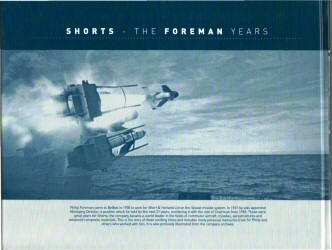| Philip Foreman came
to Belfast in 1958 to work for Short & Harland
Ltd on the Seacat missile system. In 1967 he was
appointed Managing Director, a position he held for
the next 21 years, combining it with the role of
Chairman from 1983. These were great years for
Shorts, the company became a world leader in the
fields of commuter aircraft, missiles, aerostructures
and advanced composite materials. This is the story of those exciting times and includes many personal memories from Sir Philip and others who worked with him. It is also profusely illustrated from the company archives. Here are the author, Guy Warner's, notes for his speech at the book launch at Belfast Central Library on 13th March 2008: Thanks to Sir Philip & Lady Foreman, Belfast Central Library, Thales (sponsors of event), Bombardier, Nicholson & Bass (for book production), 72R Sqn for Tucano Flypast, Eric Waugh (for foreword), Ernie Cromie (for designing the exhibition), Lynda (my wife). Why I wrote the book? |
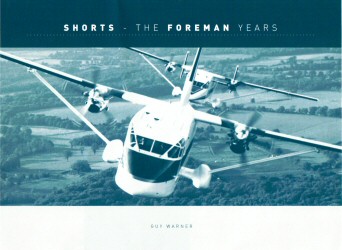
|
(c) Thirdly what is his place in the history of aviation in the UK? To use a rugby analogy, the backs win all the headlines and the glory but the forwards are the engine room and win the hard yards. In this context the backs would include such great names as Tom Sopwith, Frederick Handley Page, Geoffrey de Havilland, AV Roe and, of course, Oswald Short. I would place Sir Philip in the forwards, lining up with Sir Arthur Marshall, Sir Michael Bishop, Sir Peter Masefield, Sir Stanley Hooker, Sir Sidney Camm, Sir Roy Chadwick, Sir Alan Cobham and Sir James Martin – the engineers, the mathematicians, the designers, the entrepreneurs.
(d) Finally here are the total sales figures concerning the best selling British civil aircraft since the Second World War: the Vickers Viscount 444, the BAe 146/Avro RJ 394, the Avro/HS/BAe 748 382, the BAC 1-11 244, but the Skyvan/330/360 family – all developed during Sir Philip’s years at Shorts – 496.
Thank you very much for coming this evening to honour Sir Philip, I hope that you will enjoy reading the book and that you will agree that it goes some way in achieving the aim I set out.
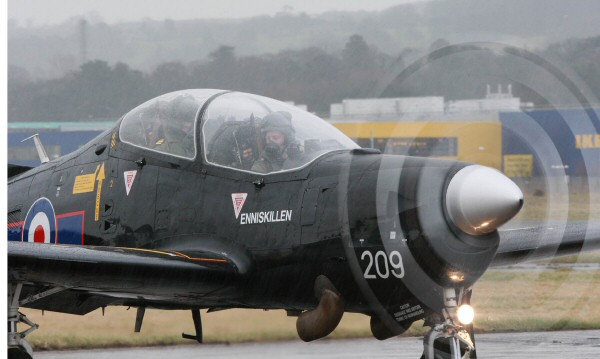
One of four Tucanos of No.72 (Reserve)
Squadron Royal Air Force, based at Linton on Ouse,
which flew in copies of the book to raise funds for two
charities: via Warner
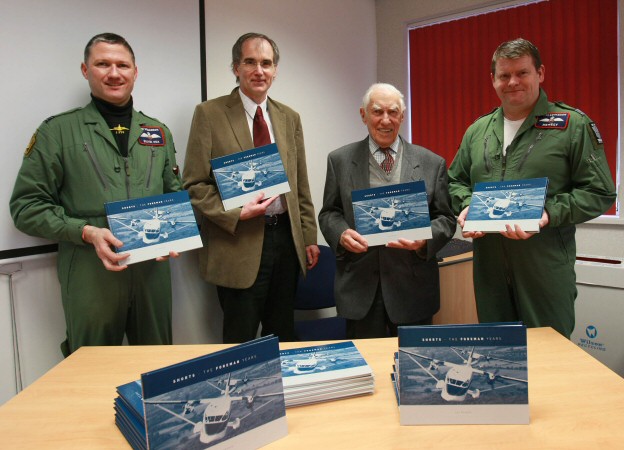
the author Guy Warner with Sir Philip Foreman and two of the
72 (R) Sqn Tucano aircrew: via Warner
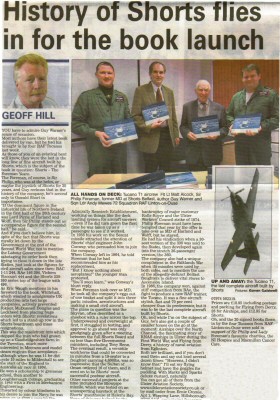
Press article - click for larger version: via Warner
Links:
Sir Philip Foreman's early
days
Soham Grammarians'
2008 Dinner - at which a copy
of the book was presented to the Resource Centre of Soham
Village College
Philip Foreman 10 Jun 10: I thought you might
be interested in this extract from the Shorts' internal
magazine:
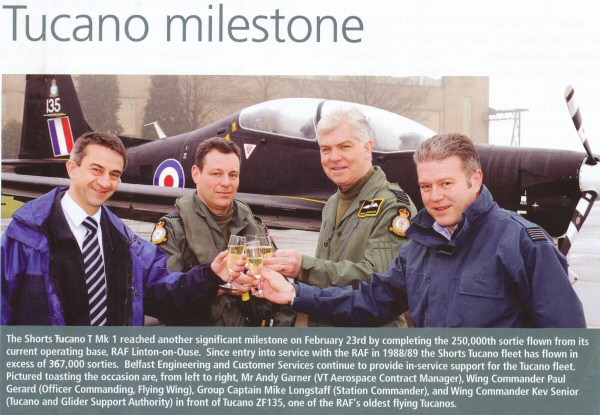
To order the book
ISBN 978 1 905989 93 5
Publisher: Ulster Aviation Society 2008: 80 pages, 112
illustrations of which 67 in colour
Price (incl. p&p) : UK: £12.95; Europe: £14.95; Worldwide: £19.95
Please contact:
Ulster Aviation Society,
Mr Ernie Cromie, Apt A1, Wapping Lane, Hillsborough, Northern
Ireland, BT 26 6AX
e-Mail: ernieATairni.freeserve.co.uk (replace AT with @
before sending)
Tel.: +44 (0) 7974502319
last updated 10 Jun 2010
